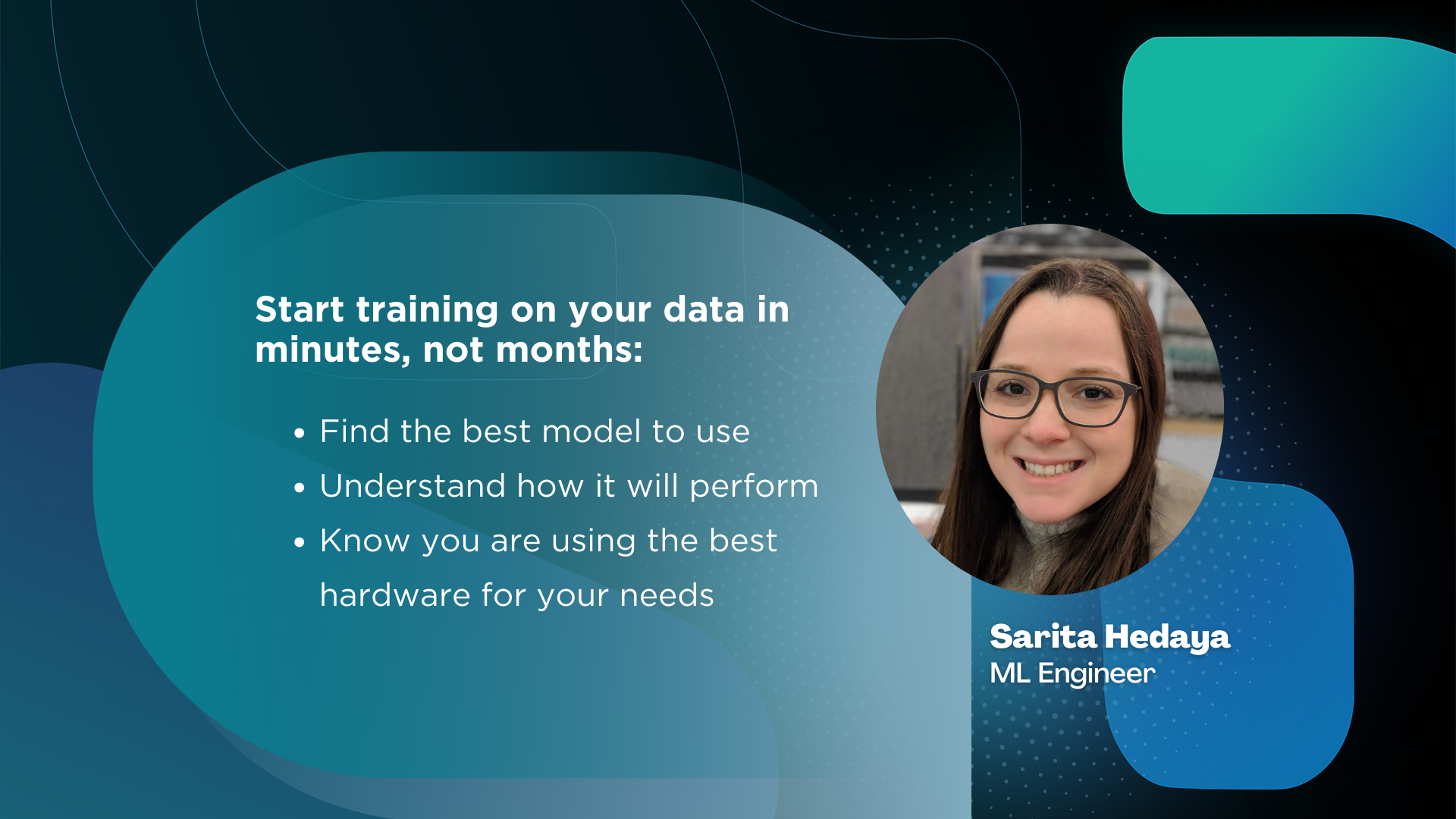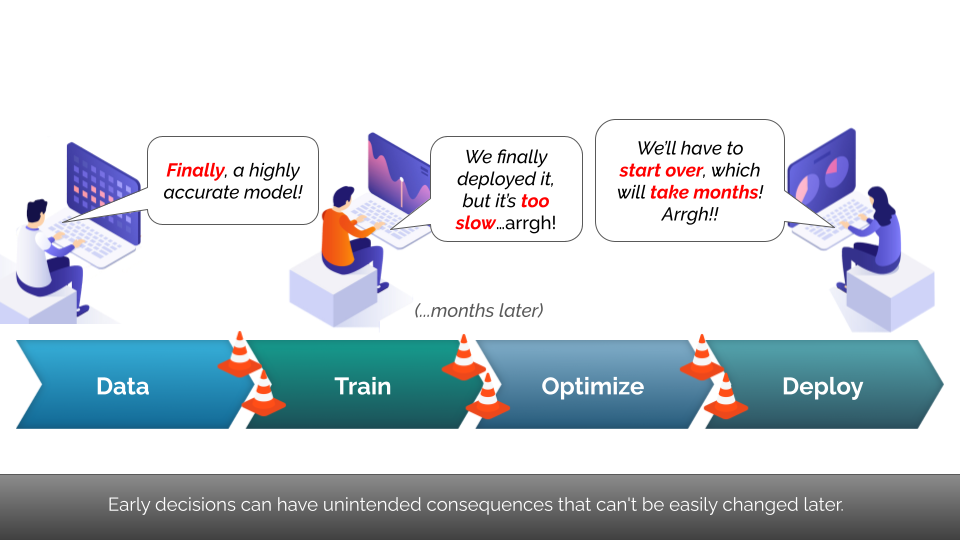Learn how LEIP accelerates your time to deployment Schedule a demo
Design, Deploy and Manage Your Edge AI

Latent AI Senior ML Engineer Sarita Hedaya recently discussed the challenges and solutions surrounding edge AI implementations. AI developers, data scientists and ML engineers can spend months trying to find the optimal combination of model and device for their data. Our solutions let users skip the research and start training on their data in minutes, not months, with software that helps them design, deploy, and manage edge AI at scale.
The Edge AI Conundrum
While the promise of faster processing and lower latency is enticing, the journey from conception to execution can be fraught with challenges. Slow development cycles, high failure rates, and missed opportunities are far too often the norm.
In fact, 85% of ML projects never reach deployment due to key pain points including:
- Collaboration challenges: Seamless teamwork between data scientists, ML engineers, and deployment specialists is crucial but often difficult.
- Knowledge gaps: Integrating models with specific hardware requires specialized expertise not readily available in every team.
- Time-consuming trial and error: Traditional methods often involve inefficient experimentation leading to wasted resources. Imagine training a perfect model, only to discover it’s incompatible with the target hardware, forcing you to start over!

Introducing LEIP Design: Recipes that speed edge computer vision design and deployment
LEIP Design, a revolutionary tool within the Latent AI Efficient Inference Platform (LEIP), tackles these challenges head-on with a recipe-based approach. Recipes are pre-defined templates that guide the entire ML modeling and deployment process from start to finish. These recipes:
- Simplify decision-making: By specifying performance and hardware requirements upfront, LEIP Design helps choose the right model for the job, reducing the risk of post-deployment surprises.
- Reduce development time: By streamlining processes and mitigating the need for extensive revisions, LEIP Design accelerates project timelines.
- Increase success rates: With clear direction and pre-defined functionalities, LEIP Design significantly reduces the chances of project failure.
Enabling Collaboration and Innovation
LEIP Design fosters collaboration across teams by providing a centralized recipe database, continuously populated through our extensive device farm. This farm encompasses a wide range of hardware, spanning CPUs, GPUs, FPGAs, and more, allowing us to continuously search and identify the best performing recipes for each target hardware. As a result, the LEIP Recipe Database currently holds over 50,000 ML component combinations and configurations, and this number is constantly growing. This comprehensive testing across diverse hardware ensures the Recipes are optimized for a wider range of real-world scenarios, saving users valuable time and resources.

The constant evolution of hardware and data can leave even the most experienced teams struggling to keep pace. LEIP Design empowers users to navigate this dynamic landscape with confidence and efficiency through its two key strengths:
-
Adaptability to Changing Needs
- Future-proof your models: LEIP Design’s flexible framework allows you to seamlessly adapt your models to new hardware opportunities. This means you don’t need to start from scratch when new, more powerful hardware becomes available. Simply leverage your existing model and retrain it on the new platform using the appropriate LEIP recipe, saving significant time and resources.
- Embrace continuous innovation: The ever-changing hardware landscape fosters ongoing innovation. LEIP Design allows you to explore emerging hardware options with minimal effort, enabling you to capitalize on the latest advancements and stay ahead of the curve.
-
Minimizing Wasted Resources
- Eliminate post-deployment surprises: Traditional methods often lead to incompatible hardware pairings, resulting in wasted time and resources spent retraining models after deployment. LEIP Design eliminates this frustration by identifying the optimal hardware for your specific needs upfront. This ensures seamless deployment and avoids the need for costly rework.
- Reduce retraining overhead: Hardware standards are constantly evolving, which can necessitate model retraining for optimal performance. LEIP Design’s extensive recipe database helps you mitigate the need for frequent retraining by providing a wider range of compatible hardware options. This allows you to leverage your existing model for extended periods, even as hardware standards change, significantly reducing your resource burden.
Design Edge AI with Confidence
LEIP Design empowers teams to design their edge AI confidently and achieve faster, more reliable project outcomes. LEIP Design allows users to:
- Find the best model quickly: By specifying performance and hardware requirements upfront, LEIP Design helps choose the most suitable model, reducing post-deployment surprises.
- Understand how it will perform: LEIP Design predicts the deployed performance of the model before training, allowing for informed decision-making.
- Know you are using the best hardware for your needs: LEIP Design’s recipe database helps identify compatible and efficient hardware options based on project requirements.
Watch the webinar here
Contact info@latentai.com to explore how LEIP Design can enhance your AI development, ensuring faster, more reliable project outcomes.



